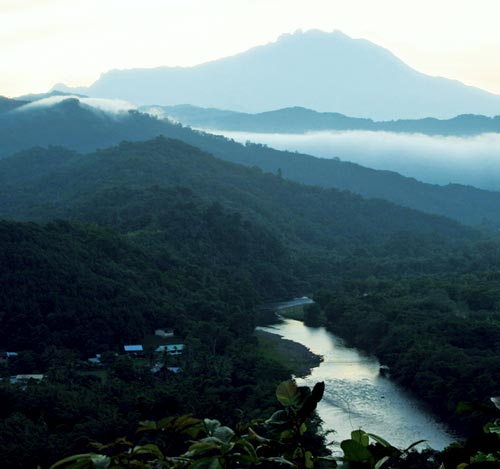



Buying land, improving amenities
June, 2017 in Issue 2 - 2017, Publication
Next, an airstrip
Tan Sri Richard Lind was the Resident in Sandakan over this period. He followed with interest our progress with the bridge. He arranged for a big delegation including Chief Minister Tan Sri Peter Lo and two State Ministers to come up for the official opening on Sept 5, 1966.
In his speech, Lo predicted that before many years passed, the bridge would become a vital link in Sabah’s road network, connecting the lower Labuk to Sandakan and Kota Kinabalu. He hoped that the pioneering work being done by Unilever in the Labuk Valley, would encourage other investors into the oil palm industry; and he foresaw the Labuk region becoming one of the main centres of oil palm development in the state.
He also suggested that with the increasing amount of activity in the Labuk Valley, it would be very helpful not only to our company but also to the expanding community and to the state government, if we were to build an airstrip on the estate.
He told us that the government was planning to introduce a regular internal air service connecting a few places in the interior to Kota Kinabalu and Sandakan. He promised that if our strip was up to the standard required, he would have Pamol put on to a regular twice-weekly scheduled service. This was too good an offer to miss. Joe Joyce and his road-team completed the new runway in a couple of months.
The opening of the airstrip was another important step forward. One of the first planes to land (or perhaps I should say, nearly land!) on the new airfield, was a single-engine Cessna, belonging to a company called Sabah Air. It was chartered by Brian Bodie, the manager of Borneo Company, from whom we purchased the bulk of our fertilisers.
The plane flew low over our house and circled the estate a few times. I jumped into my car and drove to the airstrip to greet them. They landed just as I arrived. Unfortunately the pilot touched down about 50 yards short of the runway in a patch of swamp.
I could not have had a better view of the accident. The plane bounced once, then stuck in the mud, rolled upside-down, and slid gracefully along backwards to end up right at my feet. The occupants were unharmed but they were swinging upside down from their safety straps like canaries. It was an unusual sight.
The plane was a write-off. After the owners had stripped out the engine and other salvageable parts, we flattened it, and bulldozed the carcase into the swamp which had been its downfall. No doubt it remains there to this day waiting to be a source of speculation to future archaeologists.
Peter Lo was as good as his word and a year or two later Pamol became one of the scheduled stops for the internal service of Borneo Airlines. Until the introduction of the scheduled service, however, we arranged a regular weekly charter flight to and from Sandakan with Sabah Air, in spite of their unfortunate introduction to our strip.
The air-service proved its usefulness when one day our entire Timorese community asked for a few days off work to go down by boat to Sandakan to arrange the funeral of Johanes, a colleague who had died in Sandakan Hospital. It was a particularly busy period on the estate. I suggested that instead of the community losing three or four days’ work, we should fly Johanes in and bury him on the estate.
I contacted Sabah Air. They refused to transport the body because the pod, which they usually had fixed to the underside of the plane for carrying large objects was being repaired. I suggested that they could sit Johanes in the passenger seat behind the pilot. They told me their Chinese pilot was superstitious and was reluctant to agree to this.
We were Sabah Air’s best customer on the east coast at the time, and I had to threaten to cancel our contract unless they agreed. Our Sandakan driver collected Johanes’ body from the mortuary. The coffin could not of course fit in the small single-engine plane; so, as instructed, he arranged to have Johanes wrapped in a sort of winding-sheet. They managed to sit him in the passenger seat behind the pilot, and fastened his safety strap.
When the pilot landed at Pamol he was looking rather white about the gills. He said that all the way to the estate, alone in the plane, he kept thinking he heard rustling noises coming from behind him. When he banked the plane to start the landing, Johanes fell forward against his shoulder, and he had to push him back with one hand while manipulating the landing controls with the other. He really was not a very happy man!
The second part will be published in the next issue. This is an edited chapter from the book published in 2007. It can be purchased from the Incorporated Society of Planters; email: isphq@tm.net.my